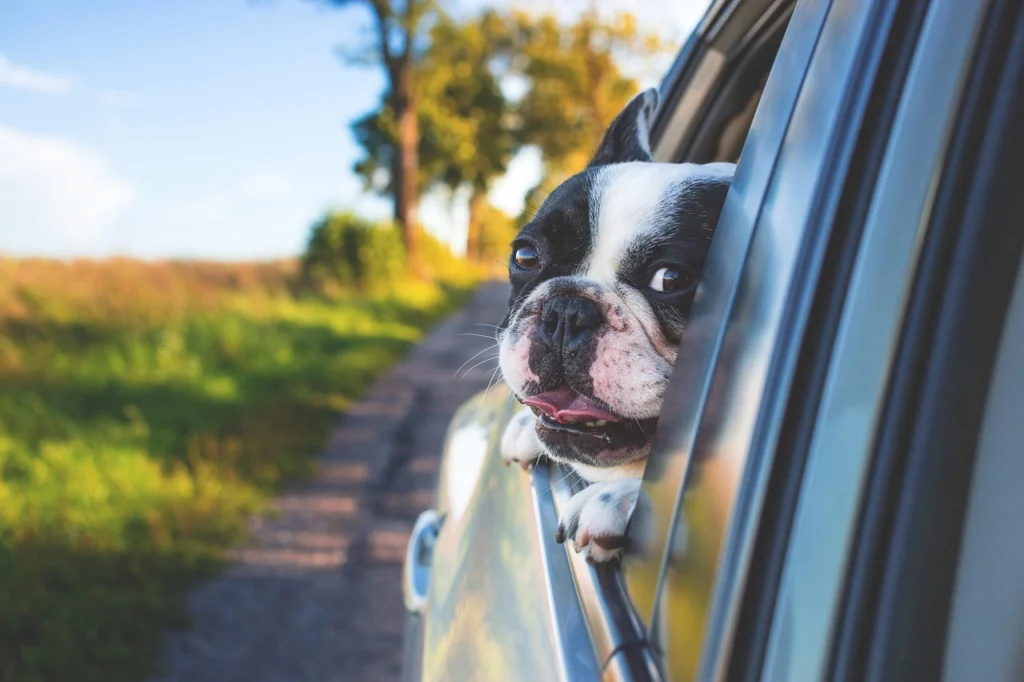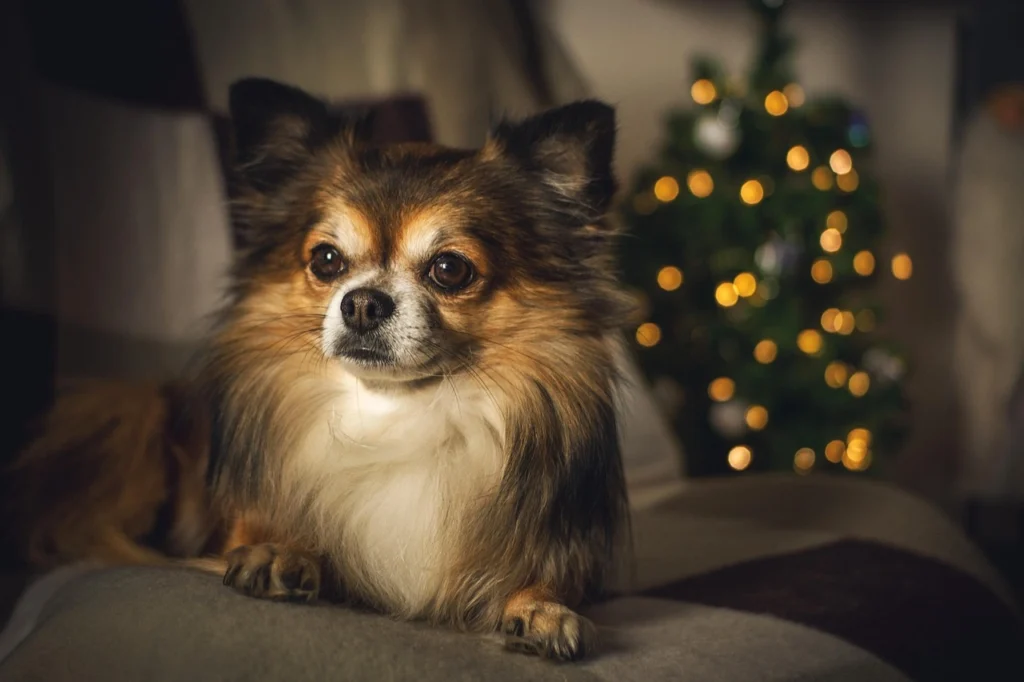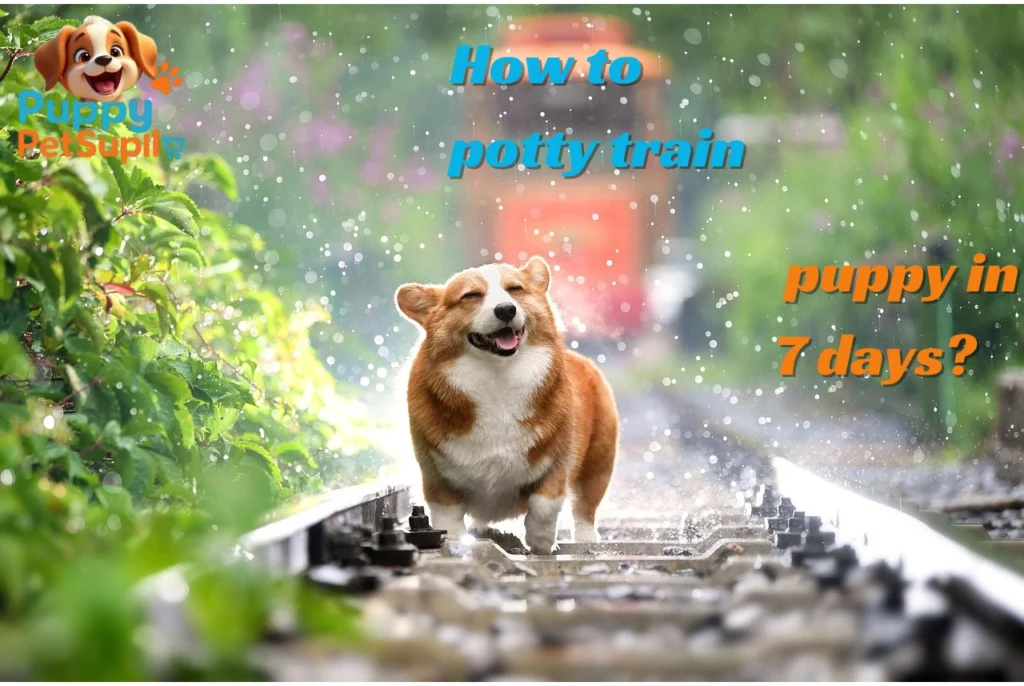How to Potty Train Your Puppy in 7 Days?
How to potty train puppy in 7 days
Potty training a puppy is a big step in their life. 80% of puppy owners make it a top priority. It helps build good habits for life. You can start as early as 8 weeks old with a good plan.
It’s important to know when your puppy needs to go and make a schedule. We’ll show you how to potty train your puppy in 7 days. You’ll learn about the right supplies, training methods, and how to handle any problems.
Key Takeaways
- Start potty training as early as 8 weeks of age.
- Create a schedule that works for you and your puppy.
- Understand your puppy’s bathroom needs.
- Use essential supplies for effective potty training.
- Troubleshoot common challenges during the training process.
Understanding Your Puppy’s Bathroom Needs

A puppy intently sniffs the ground, its ears perked up, as it prepares to relieve itself. The scene is captured in soft, natural lighting, with a shallow depth of field that keeps the puppy in sharp focus while blurring the background. The puppy’s body language conveys a sense of concentration and purpose, as it navigates its instinctual bathroom needs. The image is framed from a low angle, emphasizing the puppy’s curious and observant perspective. The overall mood is one of understanding and insight into the puppy’s natural behaviors, set against a serene, uncluttered backdrop that allows the viewer to focus on the subject’s actions.
Knowing your puppy’s bathroom needs is key to potty training. Puppies have small bladders and quickly pass water and solid waste. This affects their toileting habits.
To train a puppy well, we must grasp their natural bathroom patterns. We also need to spot when they need to go and consider their age.
Natural Puppy Elimination Patterns
Puppies have set times when they need to go. They usually do so after waking, eating, and playing. Knowing these times helps us set up a potty training schedule that fits their natural habits.
Signs Your Puppy Needs to Go
Puppies show certain signs when they need to go. Look for whining, sniffing, or circling. Spotting these signs lets us quickly take them to the potty area, helping them learn good habits.
Age-Specific Considerations for Potty Training
A puppy’s age is a big factor in potty training. Puppies can hold their bladders for about an hour for each month of age. So, a 2-month-old can hold it for 2 hours, and a 3-month-old for 3 hours. This helps us plan a puppy potty training schedule that works.
By understanding these aspects, we can create a potty training plan that meets our puppy’s needs. This increases the chances of successful potty training.
Essential Supplies for Successful Potty Training
A well-lit studio scene featuring a young puppy sitting calmly inside a wooden crate with a soft, plush bed. The puppy’s expression is inquisitive and attentive, with its head tilted slightly to the side. The crate is positioned on a wooden floor, surrounded by essential puppy training supplies like treat bags, pee pads, and a water bowl. The lighting is warm and diffused, creating a cozy, inviting atmosphere. The camera angle is slightly elevated, providing a clear view of the puppy and the training supplies. The overall composition highlights the importance of creating a comfortable, secure environment for successful potty training.
Having the right puppy training supplies is key for a smooth potty training process. The right tools make training easier and help reinforce good behavior in your puppy.
Selecting the Right Crate Size and Type
Crates are great for potty training as they tap into a dog’s instinct to keep their den clean. When selecting a crate, pick one that fits your puppy well. It should be big enough for them to stand, turn, and lie down comfortably. A crate that’s too big can lead to accidents.
Potty Training Pads and Their Proper Use
Potty training pads are helpful, mainly in the early stages or for puppies with accidents. They give a specific spot for your puppy to go potty when you can’t take them outside. Place the pads in the same spot every time and praise your puppy for using them right.
Treats and Rewards for Positive Reinforcement
Treats and rewards are vital for positive reinforcement in potty training. They help your puppy learn to go potty outside by associating it with treats and praise. Use small, tasty treats your puppy loves. Reward them right after they go potty outside to reinforce the good behavior.

How to Potty Train Puppy in 7 Days: The Complete Plan
Our 7-day plan helps you potty train your puppy fast and well. It uses a structured method to housebreak your puppy in just a week. This method is based on consistency and positive reinforcement.
Day 1: Establishing a Consistent Schedule
On the first day, focus on setting a consistent schedule for feeding, play, and bathroom breaks. This routine helps your puppy learn when it’s time to go.
Morning Routine
Begin with a morning walk or bathroom break, then feed and play. Consistency is key to developing good habits.
Afternoon Monitoring
Keep an eye on your puppy in the afternoon. Take them outside often, after meals and play.
Evening Wind-Down
As evening comes, start winding down activities. Limit food and water before bedtime.
Nighttime Protocol
Take your puppy outside for a final bathroom break before bed. Be ready for any nighttime accidents.
Day 2-3: Implementing Crate Training
Crate training is great for potty training. It uses your puppy’s instinct to keep their sleeping area clean.
Crate Introduction Techniques
Start introducing the crate slowly, with short periods and more time later. Make it comfy with soft bedding and favorite toys.
Scheduled Bathroom Breaks
Keep up with scheduled bathroom breaks outside. Praise your puppy for successful uses.
Positive Reinforcement Methods
Reward your puppy with treats and praise for using the bathroom outside right. This reinforces good behavior.
Day 4-5: Expanding Freedom Gradually
As your puppy gets better at potty training, give them more freedom in the house.
Supervised Exploration Time
Let your puppy explore more of the house while you watch closely.
Recognizing Progress Indicators
Look for signs your puppy needs to go, like sniffing or circling. Quickly take them to the bathroom area.
Adjusting the Schedule as Needed
Be ready to change your schedule based on your puppy’s progress. Increase or decrease freedom as needed.
Day 6-7: Reinforcing Success and Independence
By the last days, your puppy should be more independent in potty training. Keep reinforcing their success.
Extending Time Between Breaks
Slowly increase the time between bathroom breaks to test your puppy’s reliability.
Testing Reliability in Different Areas
Test your puppy’s understanding of potty training in different places and situations.
Maintaining Consistency for Long-Term Success
Consistency is key; keep reinforcing good habits for long-term success.
Daily Schedule Template for Potty Training
Here’s a sample daily schedule for your puppy’s potty training:
- 6:00 AM – Wake up and take puppy outside
- 7:00 AM – Feed breakfast
- 8:00 AM – Playtime and bathroom break
- 12:00 PM – Lunch and bathroom break
- 2:00 PM – Playtime and bathroom break
- 6:00 PM – Dinner
- 8:00 PM – Final bathroom break before bed
Adjust this schedule as needed to fit your puppy’s needs and your lifestyle.
Effective Training Techniques and Commands
To potty train your puppy well, you need the right techniques and commands. A consistent voice command or cue is key. It tells your puppy exactly what you want them to do.
Teaching Your Puppy Potty Cues
Teaching your puppy potty cues is a big part of training. A simple cue like “go potty” helps them link the command to the action. Use a cheerful tone to make it a positive experience.
Proper Praise and Reward Timing
Timing praise and rewards is very important. Praise and reward your puppy right after they go potty outside. This makes them want to do it again, speeding up learning.
“The key to successful potty training is consistency and positive reinforcement.”
Expert Dog Trainers
Handling Accidents Appropriately
How you handle accidents is also key. Scolding or punishing can make things worse. Instead, clean up calmly and keep training on track.
| Training Aspect | Correct Approach | Common Mistake |
| Potty Cues | Use a consistent, cheerful cue like “go potty” | Using different cues or tones |
| Praise and Rewards | Immediately praise and reward after potty | Delaying praise and rewards |
| Handling Accidents | Calmly clean up without fuss | Scolding or punishing |
Troubleshooting Common Potty Training Challenges
Potty training can face many challenges. It’s not a one-size-fits-all solution. You need to be flexible and understand your puppy’s needs.
Dealing with Nighttime Accidents
Nighttime accidents are common in young puppies. Limit water before bed and take them out right before sleep. Consistency is key in potty training.
Addressing Regression in Training
Regression can happen due to changes or health issues. If you see a setback, go back to the basics. Be patient, as regression is part of learning.
Managing Excitement or Submissive Urination
Some puppies urinate due to excitement or submission. Stay calm and avoid loud praise. Use gentle, positive training methods.
Weather-Related Potty Training Issues
Bad weather can stop puppies from going outside. Create a covered potty area or use indoor solutions. Keep the routine going, no matter the weather.
When to Consult a Veterinarian
If your puppy has frequent accidents or seems distressed, see a vet. Health issues like UTIs can affect training. A vet can help keep your puppy healthy and happy.
Conclusion
Potty training your puppy in 7 days needs dedication, patience, and the right methods. Knowing your puppy’s bathroom needs and using the right supplies helps a lot. This way, you can train your puppy effectively.
Being consistent, using positive reinforcement, and being patient are very important. With a good plan, you can speed up the training. This leads to faster potty training for your puppy.
Keep in mind that as you train your puppy, you might face some challenges. But don’t worry, staying consistent is key to long-term success. With time and effort, your puppy will learn to go potty outside. You’ll have a cleaner, happier home.
By following the steps in this guide, you can make housebreaking your puppy easy. This leads to a well-behaved and well-trained puppy.
FAQ
Puppies can hold their bladder for about 1 hour for each month of age. So, a 2-month-old puppy can hold it for 2 hours. A 3-month-old puppy can hold it for 3 hours.
Look for signs like whining, sniffing, or circling. These are signs your puppy needs to go.
Pick a crate that lets your puppy stand up, turn around, and lie down comfortably.
Our 7-day plan includes a consistent schedule, crate training, and expanding freedom. It also involves reinforcing success and independence.
It’s important to handle accidents right. Don’t scold or punish your puppy. This can make training harder.
Weather can affect potty training. Be patient and adjust your training schedule as needed.
See a vet if you notice health issues that might affect potty training.
Keep to your training schedule, use positive reinforcement, and be patient. This will help with long-term success.
Teach your puppy potty cues, use praise and rewards at the right time, and handle accidents well. These are effective techniques.
Yes, potty training pads are useful, mainly in the early stages or for puppies with accidents.

